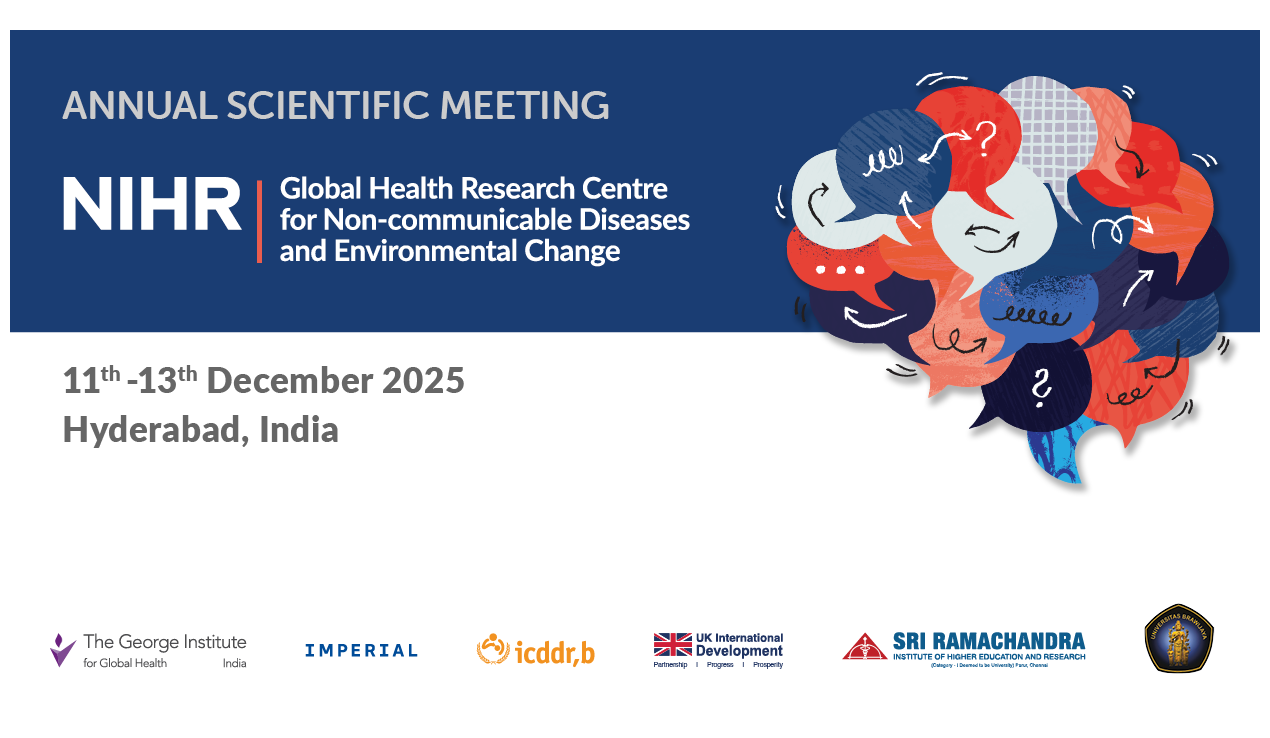This is the second entry in a collection of field commentaries.
Identifying the key stakeholder groups in the Public Distribution System (PDS) in the Srikakulam district of Andhra Pradesh, to help us build a comprehensive understanding of the supply chain, was a vital first step. Leading to the process of primary data collection through in-person meetings with various stakeholders across Srikakulam.
Breaking Ground: The MLSP In-Charge as the First Key Stakeholder
The Mandal Level Stock Point (MLSP) In-Charge were the first stakeholders we approached. With direct connections to rice mills, godowns, and ration dealers, also known as Fair Price Shops (FPS), MLSPs are at the focal point of the entire PDS supply chain. Distributing essential commodities like sugar and pulses (dal) through FPS along with fortified rice, MLSPs ensure that communities receive diversified food resources to support nutrition and well-being.
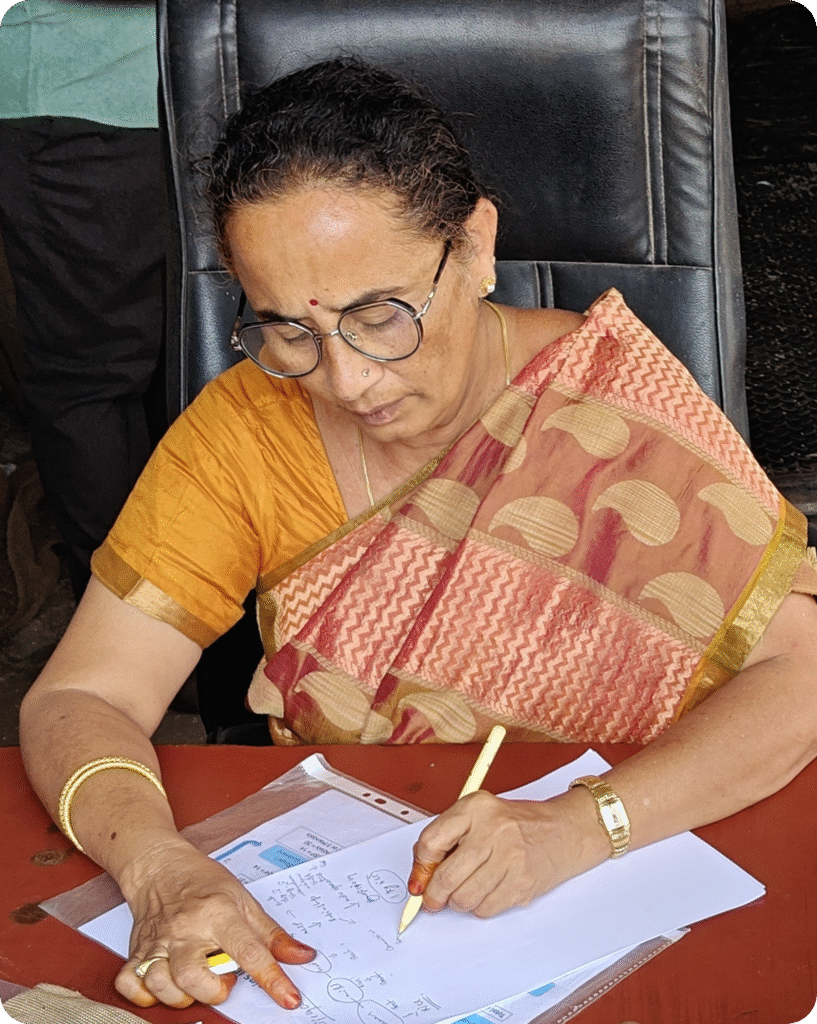
We met with the various MLSPs to learn more about the rigors and nuances of the PDS. Notable amongst these conversations was a memorable interaction with the MLSP in charge of Amadalavalasa and Deputy Tehsildar officer (DTO), Mrs. Sharda Devi. Sharing her experience of more than two decades in civil supplies, Mrs. Devi spoke knowledgably and passionately about her experience and the challenges of tackling both inter and intra-system barriers towards making civil supplies sustainable and robust.
Mrs. Sharda Devi, MLSP in-charge, Amadalavalasa MLSP, Srikakulam
Rice Mills: The Most Complex Node in the PDS Supply Chain
Rice mills serve as the vital link between farmers and the market, paying farmers for their produce (paddy) based on the rigorous standards established by the Andhra Pradesh State Civil Supply Corporation Limited (APSCSCL). Beyond this crucial role, rice mills also partner with godowns and various other external stakeholders (non-PDS) to effectively market valuable co-products, including broken rice, rice bran, and husk. Operating at a capacity of 2,000 metric tons per year, a medium-sized rice mill provides livelihoods for 20 to 30 individuals on average during the four to six months of their operation period, while playing a significant role in the agricultural supply chain. We aimed to connect with at least two rice mills per MLSP, which meant reaching over 28 mills across different MLSPs.
However, the true scale and challenges of our ambitious goal was driven home to us when we realized that the timely delivery of fortified rice grains to meet critical targets as per regulations, and the fact that operations would go into hiatus at the end of the agricultural season, made rice mill owners both reticent and inaccessible.
Interaction with a rice mill owner
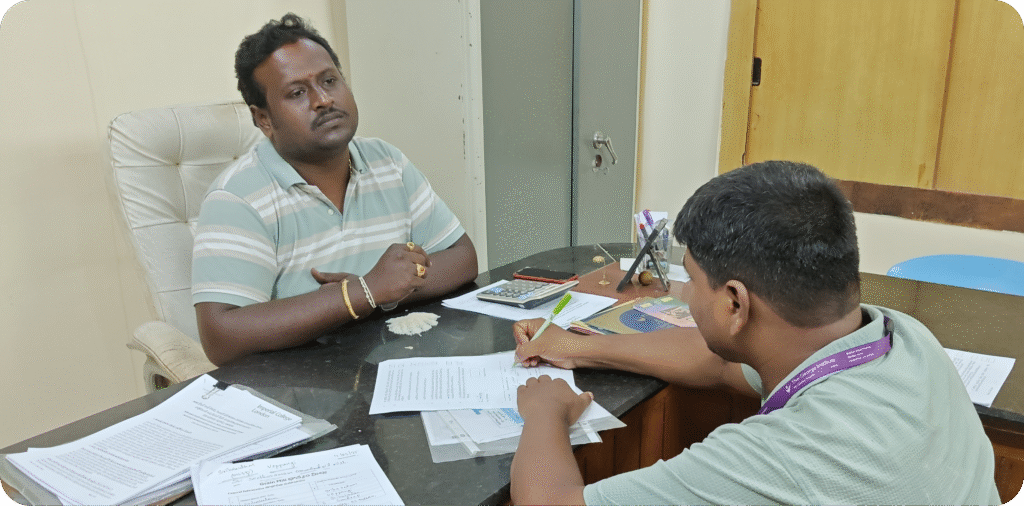
We promptly identified mills still in operation and met the owners available for discussions, and with the diligent efforts of our data collection team, we were able to overcome obstacles and access the vital information we needed.
Godowns: The Most Accessible and Intricate Group of Stakeholders
Godowns, operating according to well-established targets, play a crucial role in managing the grain supplies received from rice mills. Storing up to 30,000 metric tons of grains, these warehouses or godowns serve as essential hubs for the food distribution system. Within the PDS, there are three major types of godowns that store and help distribute rice grain supply. The State Warehouse Corporation (SWC), Agricultural Marketing Committee (AMC), and the individual godowns run by private stakeholders. Strategically located near MLSPs, the proximity of the godowns and the MLSPs enabled our data collection team to interact with the godown managers and helped us gather vital information.
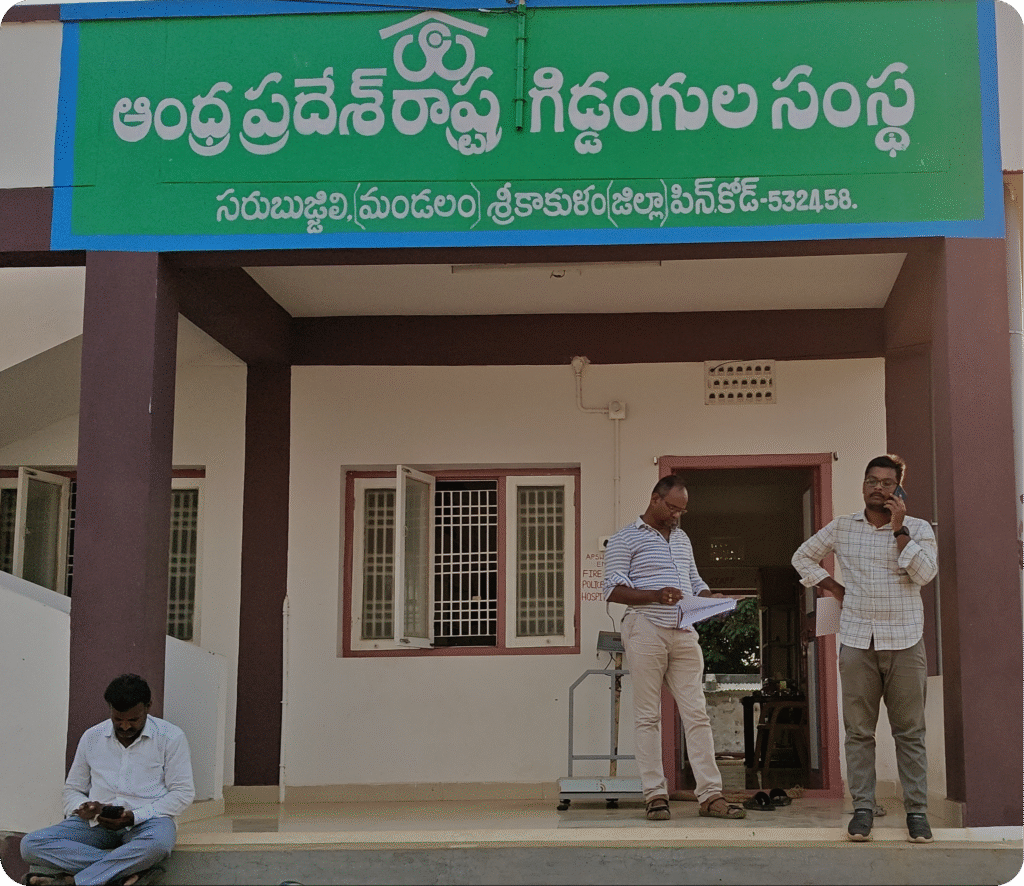
During an Interaction with a Godown Manager
Capturing the Grassroots Perspective: Farmers, Dealers, and Beneficiaries in Focus
In the PDS supply chain, farmers or cultivators are the first stakeholders, while dealers and beneficiaries are the last two. Interestingly, these three stakeholders are located in villages. Therefore, we tailored our approach to engage with them simultaneously. In several cases, we found these three stakeholders in the same hamlet within the same panchayat. Interacting with the farmers took more time compared to engaging with the ration dealers and beneficiaries. Ration dealers were particularly difficult to locate in the villages, and we had to make several attempts to find the right ones. However, we were able to interact with eight village farmers, which ultimately helped us identify two ration dealers per MLSP.
Once we located the ration dealers, interacting with the beneficiaries became much easier, especially during the monthly ration distribution period. Through our interactions with the different stakeholders, we were successful not only in collecting high-quality primary data but also in gathering comprehensive environmental, energy, and economic data throughout all the life stages of the PDS.
Interaction with a Beneficiary
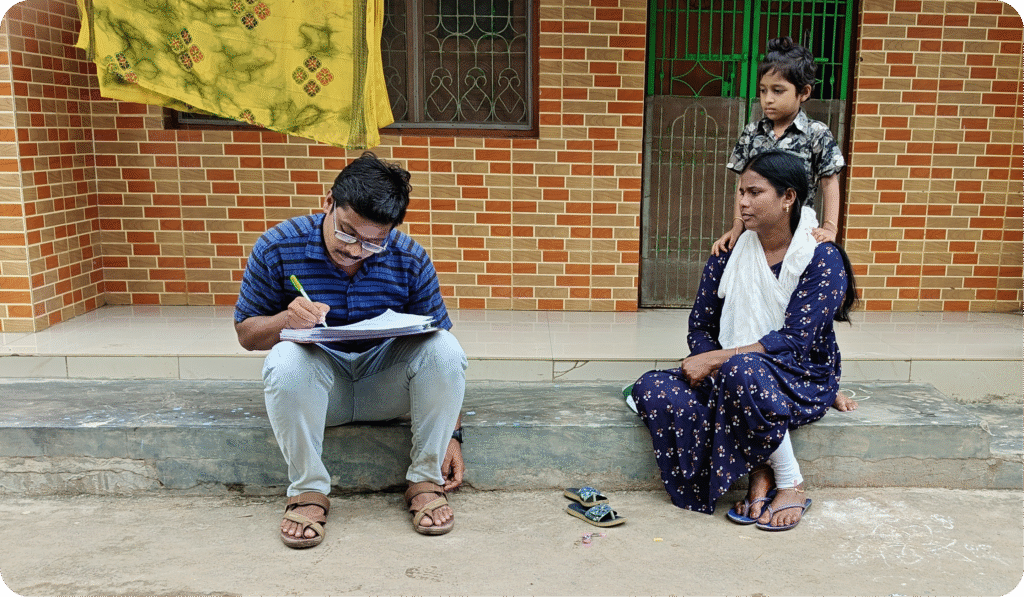
Enriching our experience of assessing the environmental impact of large-scale food distribution systems like the PDS while deepening our understanding of the significance of such systems in people’s lives.
Stay tuned for details on what we learned from the communities, the farmers, and more, in the upcoming entry. The third installment of our field commentaries will be released soon! You can read the first entry in this collection of field commentaries here and the third here…
——————————————————
This blog was authored by Dr. Kanhaiya Lal.
About the author:
Dr. Kanhaiya Lal– Kanhaiya is a consultant at the George Institute for Global Health and a pivotal Project Scientist for the NIHR Global Health Research Centre for Non-Communicable Diseases and Environmental Change. With an impressive track record of over 12 years in environmental science and engineering—seven of which have been dedicated to research and projects following his PhD—Dr. Lal is a leading expert in conducting comprehensive environmental assessments of water, soil, food, and air quality. His impactful work also addresses critical issues such as climate change, health, waste management, and environmental compliance. A prolific contributor to environment and health research, Dr. Lal has authored ten peer-reviewed articles and reviews which have been published in over 25 international journals, making a notable impact in the field and advancing public health through environmental initiatives. Explore his publications is full here…
This research was funded by the NIHR (Global Health Research Centre for Non-communicable Diseases and Environmental Change) using UK international development funding from the UK Government to support global health research. The views expressed in this publication are those of the author(s) and not necessarily those of the NIHR or the UK government.



